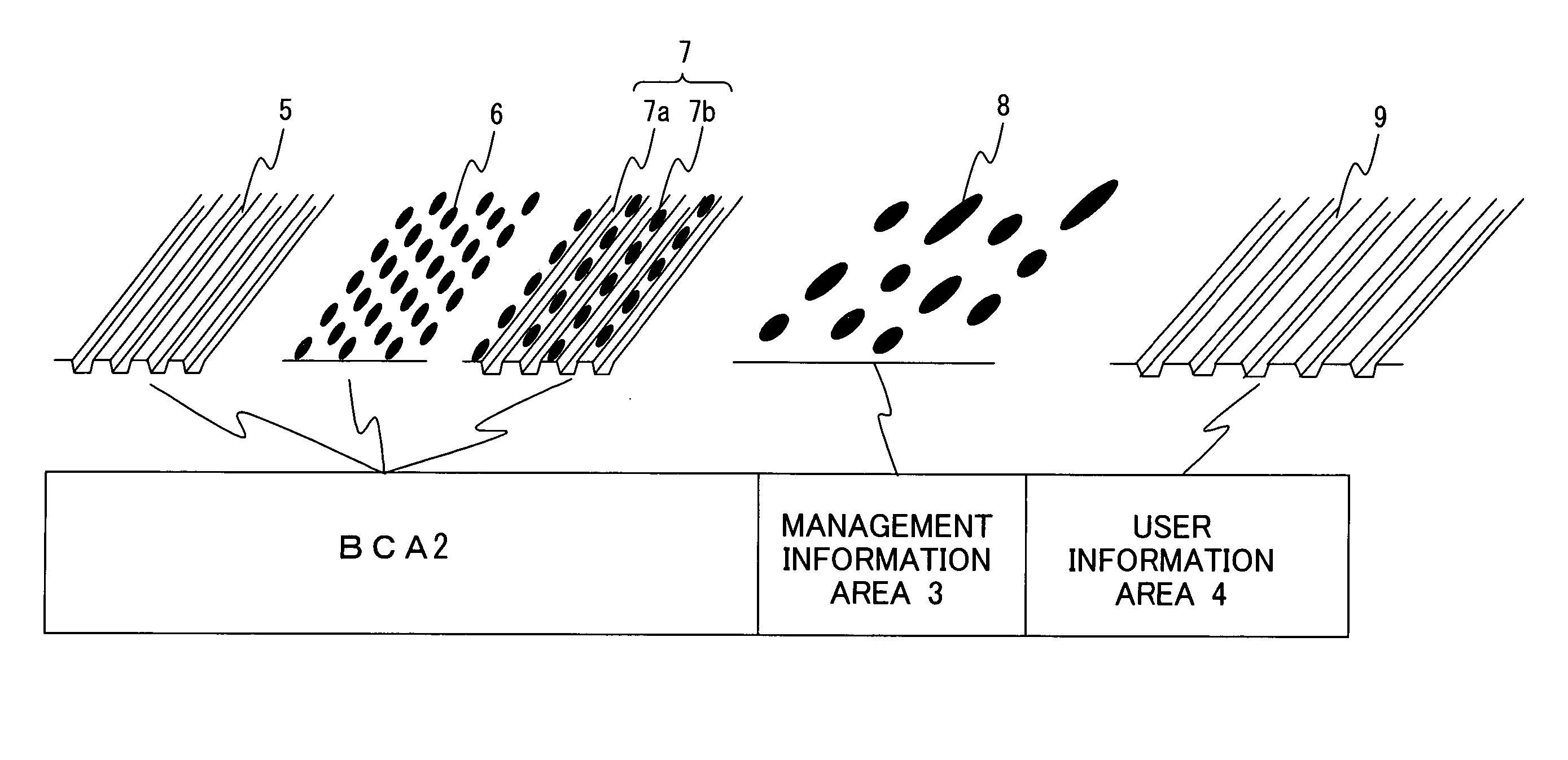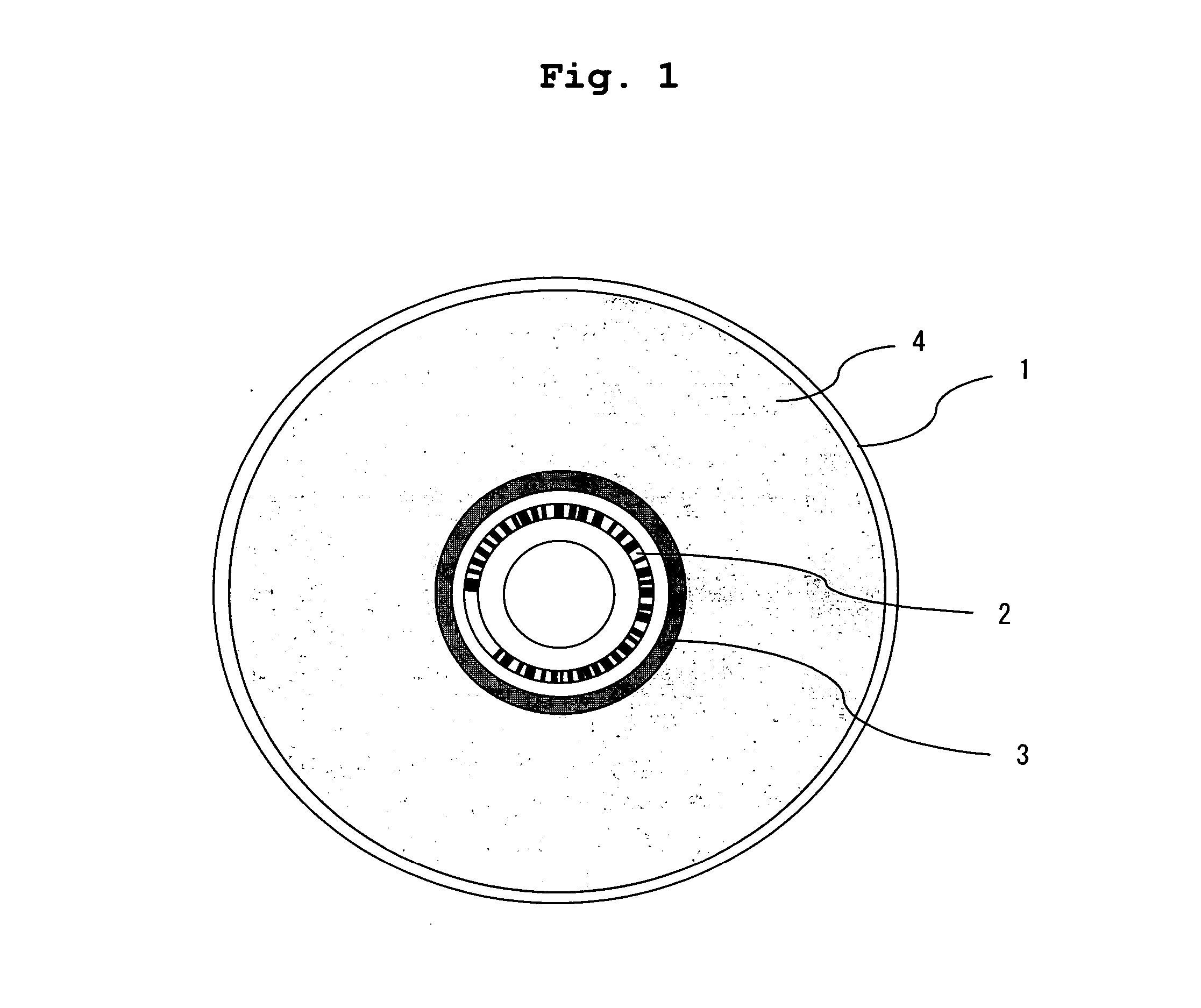Optical information-recording medium
a technology of optical information and recording medium, which is applied in the field of optical information recording medium, can solve the problems of not being able to correctly reproduce bca information, the recording layer and the reflective film are subjected to exfoliation, etc., and achieve the effect of suppressing the fluctuation of amplitud
- Summary
- Abstract
- Description
- Claims
- Application Information
AI Technical Summary
Benefits of technology
Problems solved by technology
Method used
Image
Examples
example 1
Preparation of Optical Information-Recording Medium
[0078] At first, a stamper, which was manufactured by the production method as described above, was installed to a known injection molding machine to manufacture a substrate 10 by injection-molding a polycarbonate resin of the optical information-recording medium grade. The substrate 10 is made of polycarbonate having a diameter of 120 mm and a thickness of 0.6 mm. As shown in FIG. 1, concave / convex patterns of spiral-shaped grooves and / or pits (emboss pits) are transferred onto one surface of the substrate 10 for BCA, the management information area, and the user information area formed on the glass master disk. In Example 1, BCA was formed in an area having radii of 22.20 mm to 23.20 mm. The straight grooves (not wobbled) having a track pitch of 350 nm, a groove width of 240 nm, and a groove depth of 70 nm were formed in BCA. The management information area was formed in an area having radii of 23.40 mm to 23.80 mm. The pits hav...
example 2
[0098] In Example 2, the concave / convex pattern of BCA was formed with grooves, the track pitch was 370 nm, the groove width was 250 nm, the width between the grooves was 120 nm, and the groove depth was 70 nm. An optical information-recording medium C was manufactured in the same manner as in Example 1 except that the groove dimension of BCA was changed.
example 3
[0099] In Example 3, the concave / convex pattern of BCA was formed with grooves, the track pitch was 370 nm, the groove width was 220 nm, the width between the grooves was 150 nm, and the groove depth was 70 nm. An optical information-recording medium D was manufactured in the same manner as in Example 1 except that the groove dimension of BCA was changed.
PUM
| Property | Measurement | Unit |
|---|---|---|
| depth | aaaaa | aaaaa |
| depth | aaaaa | aaaaa |
| width | aaaaa | aaaaa |
Abstract
Description
Claims
Application Information
 Login to View More
Login to View More - R&D
- Intellectual Property
- Life Sciences
- Materials
- Tech Scout
- Unparalleled Data Quality
- Higher Quality Content
- 60% Fewer Hallucinations
Browse by: Latest US Patents, China's latest patents, Technical Efficacy Thesaurus, Application Domain, Technology Topic, Popular Technical Reports.
© 2025 PatSnap. All rights reserved.Legal|Privacy policy|Modern Slavery Act Transparency Statement|Sitemap|About US| Contact US: help@patsnap.com



